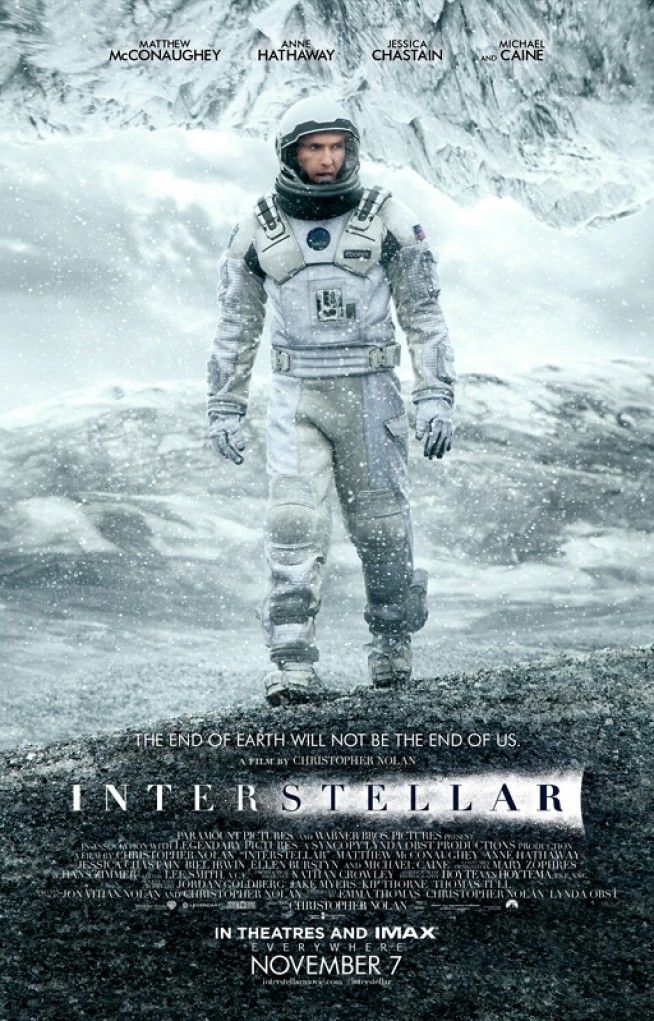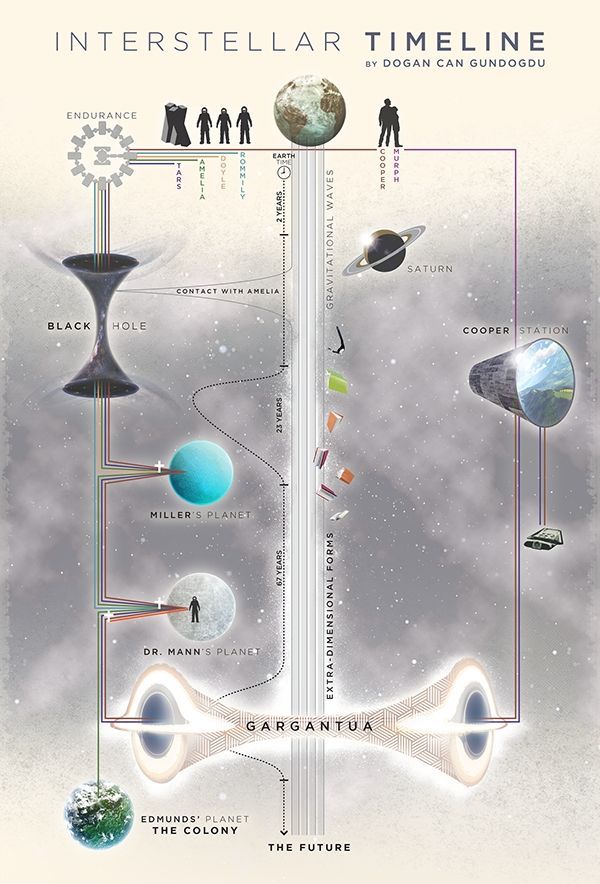Time And Space Used Against The Mission In Interstellar
The First Interstellar Planet Presents The Perils Of The Time Dilation Concept
Interstellar is based on the ideas of theoretical physicist Kip Thorne — specifically the notion that while people observe the universe in three dimensions, there could be at least five dimensions. In certain theories, it is posited that certain forces (in this case gravity) bleed through dimensions, meaning that, based on Newton’s Laws, what people perceive as a finite calculation could actually have infinite implications. Christopher Nolan movies often focus on time but Interstellar is the greatest example of this. Interstellar‘s time distillation concept is outright exemplified in the first planet that the Endurance team visits.
In general, time on humanity’s side of the wormhole moves faster than time on the uncharted side. Due to proximity to gravitational anomalies from a nearby black hole (Gargantua), time on the other side is exponentially slower — relative to the distance between an object and the black hole’s gravitational pull. As a result, time on Miller’s planet moves significantly slower — for every hour that the team spends on the water planet, seven years pass back home — the primary reason that Cooper is motivated to get off the planet as soon as possible (even before they realize it’s a death trap).
Cooper knows that three hours on the planet’s surface will cost him decades with his family. As Amelia suggests, the effect of gravity from the black hole on time was to blame for the Endurance team’s unfortunate visit to Miller’s planet in the first place, since what they perceived as years of positive beacon readings were actually mere minutes for Miller (who was killed by a wave moments after she landed).
The concept is further hammered home when, following the mission, Amelia and Cooper reunite with Romilly, who stayed behind on the Endurance to gather data (far from Gargantua), and, in the three hours his team was gone, has lived twenty-three full years alone without them. Similarly, the crew receives video messages from back home and Cooper’s children, Tom and Murph have also aged from the beginning of Interstellar‘s timeline, and are now full-grown adults (played by Casey Affleck and Jessica Chastain, respectively).
Related
Interstellar: 15 Powerful Quotes That Make You Think
the best Interstellar quotes offer deep insights into the minds of the main characters and delve into some fascinating ideas.
Time And Space As Humanity’s Salvation
How Cooper Communicates With Murph
A tangible effect of gravity on spacetime is also responsible for Cooper’s ability to communicate with young Murph when inside the Tesseract. Inside the machine, gravity bleeds through to other dimensions in time and space, allowing Cooper to spell out a message (“S-T-A-Y”) by pushing books off of Murph’s shelf — or communicate map coordinates to the past version of himself by spreading dust across the floor (in binary language).
Most importantly, the fifth-dimensional communication through gravity (made visible by three-dimensional objects back on Earth) enables Cooper to gently manipulate the hands on Murph’s watch, transferring the data that TARS acquired with morse-coded watch ticks. Subsequently, translating that coded data gives Murph all the information she needs to drastically advance humanity’s understanding of space and time, as well as complete Plan A.
How Did Coop Survive & What Happens To Amelia?
Cooper’s Bittersweet Reunion With Murph
When it comes to how Cooper survives and reunites with Murph, Nolan simply applies the same theory that has been present the entire film. Given that time moves slower near the gravity pull of the black hole, Cooper’s ejection from the Tesseract is only seconds for him, but over half a century for the rest of humanity.
If the ratio of time on Miller’s planet was 1 hour for every 7 years on Earth, the proportion would be skewed exponentially at the absolute center of the Tesseract singularity. As a result, while it appears to Earthbound humans that TARS and Cooper have been floating out in space for nearly ninety years, they were actually only out there for mere seconds as they perceived it. The disproportionate relativity allows Cooper to survive and reunite with Murph, who, living on the faster-moving side of the wormhole, is now over 100 years old.
Knowing that Cooper has nothing left to live for in a post-Earth existence (since his son Tom is presumed dead and Murph will soon join him), Murph reminds her father that, through the wormhole, Amelia is just beginning to set up Plan B on Edmonds’ planet. At the same time, it is revealed that even though Edmonds’ planet is actually habitable, the astronaut himself did not survive the landing, leaving Amelia alone at the colonization site.
Using a reversal of the film’s primary relativity theory, Cooper hops into a ship, with the knowledge that even though nearly 100 years have passed since the Endurance first set out, time on the other side of the wormhole is moving much slower — meaning that a second trip should allow him to reunite with Amelia on Edmonds’ planet only a short time after Cooper first sacrificed himself and dropped into the singularity. The ending to Interstellar doesn’t reveal if Cooper and Amelia reunite, but it certainly hints at a happy ending.
The Meaning Of Interstellar
The Repeated Quote From Prof. Brand Sums Up The Movie
Interstellar is a film about venturing into the unknown. Much like Nolan’s mind-bending sci-fi drama. Inception, the main takeaway from the end of Interstellar is not that Cooper and Amelia will be reunited (though it’s possible that they will). Rather the ending, and Cooper’s departure to find Amelia, illustrates what Prof. Brand regularly suggested by way of poet Dylan Thomas:
”
Do not go gentle into that good night, old age should burn and rage at close of day. Rage, rage against the dying of the light.”
The movie seems to posit that humanity is at its best when people throw themselves passionately into the unknown in search of love and discovery. In the end, that is what Cooper intends to do.
How The Interstellar Ending Was Received
The Reception To Interstellar Has Improved Over Time
Interstellar‘s ending was the subject of a lot of debate when the movie was first released, as well as a fair amount of criticism. While the overall reception was positive, it remains the second-lowest rated of Christopher Nolan’s movies on Rotten Tomatoes with 73%. Some of the criticisms leveled against the movie concerned the ending. While some felt Interstellar lacked momentum following the climax, others felt that the message Nolan was ultimately trying to communicate was overly sentimental.
Cooper’s line suggesting “love” is the key to saving humanity was often ridiculed for being sappy and corny, overshadowing many of the concepts of the movie’s ending and reducing it to such a cliched idea. There was also a reaction among some viewers that, following everything that Cooper sacrificed, only being able to reunite with Murph at the end of her life, was an unsatisfying end for the characters.
However, more than any other of Nolan’s movies, its reputation has greatly improved in the years since Interstellar was released. As more audiences found the movie and explored the big ideas, the ending began to be seen as a fitting culmination of the bold concepts. While the line about “love” is still an example of Nolan’s clunky dialogue, many have recognized that it is not to be taken so literally, and it simply speaks to the connection Cooper has to Murph, which becomes instrumental in saving humanity.
There is a lot to take in with Interstellar and the ending throws several curves that take the story in a direction audiences might not have expected. In that regard, it is not surprising that it has taken some time for people to come around about how they feel about the film’s conclusion.
Here’s a chart that explains what happened in visual terms (CLICK TO SEE FULL SIZED VERSION):

Interstellar
From Christopher Nolan, Interstellar imagines a future where the Earth is plagued by a life-threatening famine, and a small team of astronauts is sent out to find a new prospective home among the stars. Despite putting the mission first, Coop (Matthew McConaughey) races against time to return home to his family even as they work to save mankind back on Earth.
- Release Date
- November 7, 2014
- Runtime
- 169 Minutes





